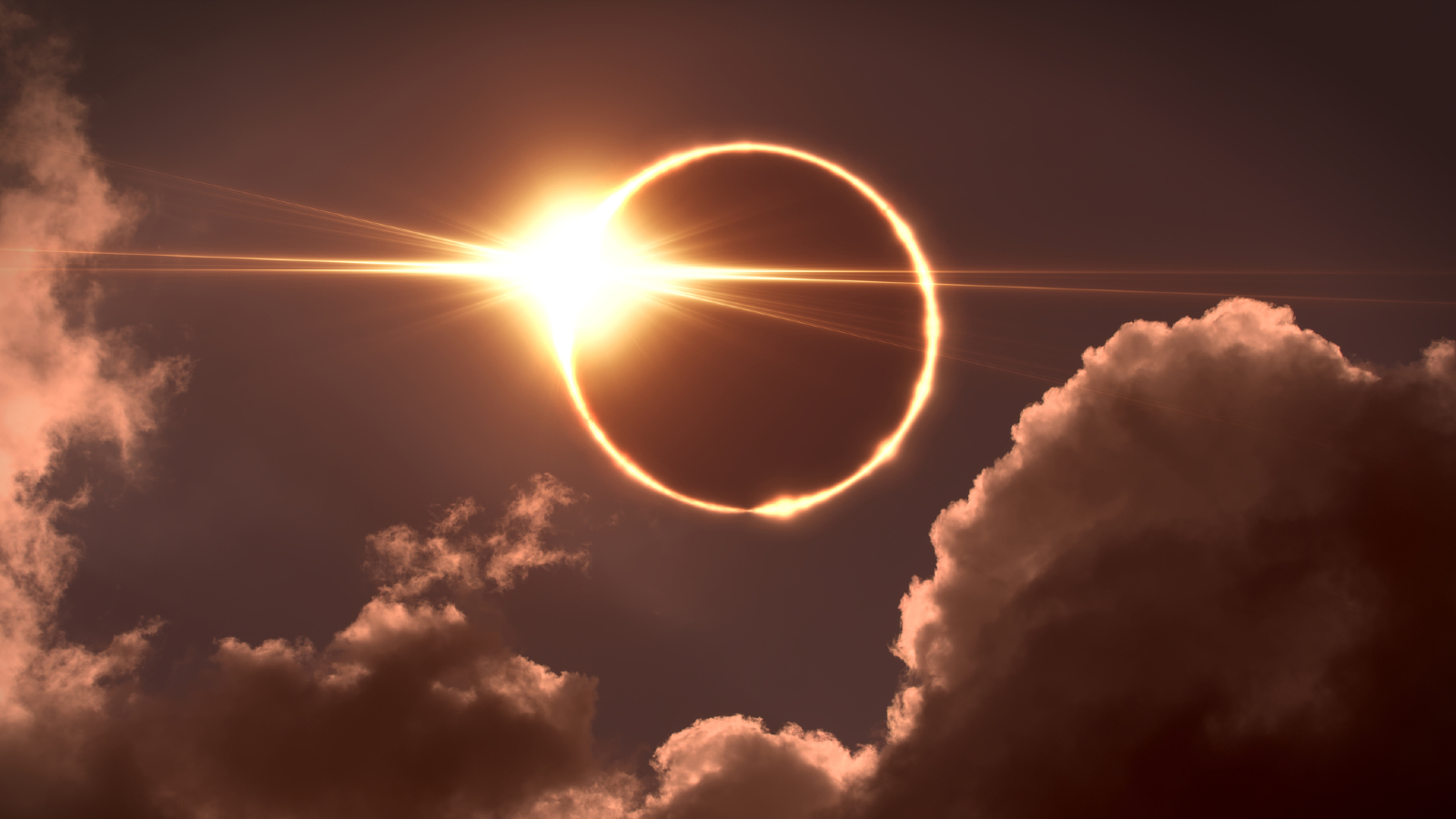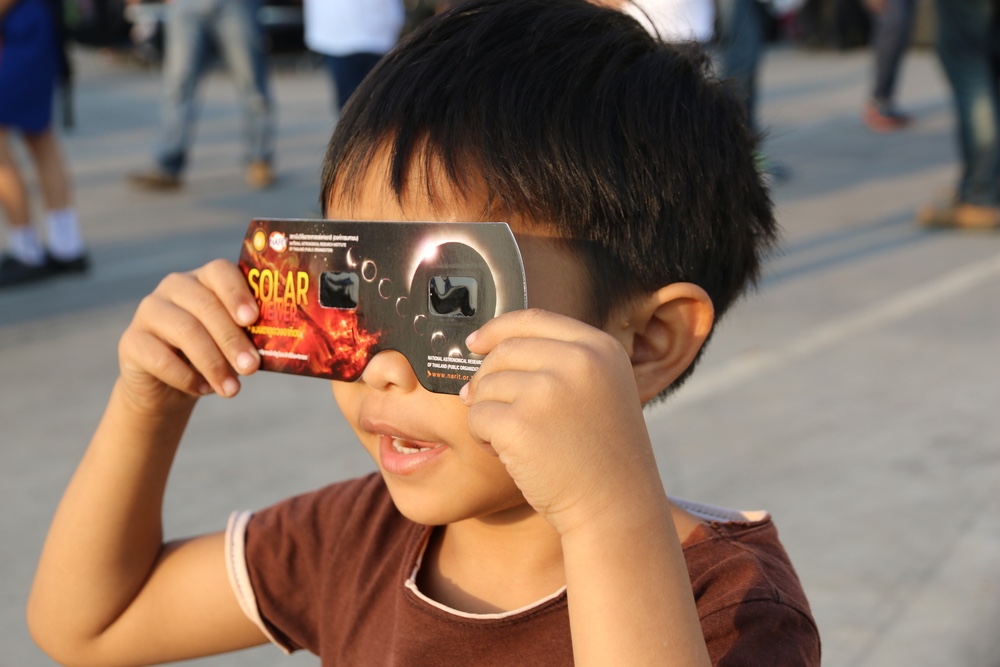Has anyone ever gone blind from staring at a solar eclipse?
It's not just an old wives' tale: Staring at the sun for too long can permanently damage detailed vision, evidence suggests.

Today (April 8), the sun will be blocked from sight for up to 4 minutes and 27 seconds, as the moon's gigantic shadow glides over 15 U.S. states.
The eclipse will be visible to an estimated 44 million people who live beneath the moon's path of totality. But will anyone be at risk? Can people really go blind from looking at a solar eclipse?
Though it sounds like an old wives' tale, there are more than 100 documented cases of serious and permanent eye damage caused by people staring too long at a solar eclipse, said B. Ralph Chou, a professor emeritus of optometry at the University of Waterloo in Ontario. However, this type of damage, called solar retinopathy, will not typically make a person completely blind, he said.
"You end up possibly getting enough damage that you can no longer see things that are really, really fine in detail," Chou told Live Science.
It's difficult to assess how common these injuries are, since only a few studies have attempted to systematically count solar eclipse blindness. However, there's a simple way to avoid going blind: Wear protective gear when looking at a solar eclipse, he added. (April 8's total solar eclipse will be at totality for up to 4 minutes and 27 seconds, almost double that of August 2017's Great American Eclipse.)
Eye geometry
Staring at the sun during a solar eclipse isn't much different from staring at the sun during a normal day. The difference is that most of us have a natural reflex to look away from the sun if we stare too long. Usually, people will glance at the sun and then look away quickly.
"Our brains are wired to avoid looking at very, very bright things like the sun," Chou said.
Sign up for the Live Science daily newsletter now
Get the world’s most fascinating discoveries delivered straight to your inbox.
However, for once-in-a-blue-moon events like a total solar eclipse, "it's possible for you to override that aversion reflex," Chou said. During these rare events, people know they are watching something special and essentially force themselves to look, he said.
Whenever someone stares at the sun, light from the sun hits the eye and focuses at the machinery called the fovea, which is located at the back of the eye. The light-sensitive cells that provide detailed color daylight vision, such as the cone cells, absorb light via photoreceptors and then translate that signal into an electrical impulse that is sent to the brain and perceived as a visual signal, Chou said.
But during a solar eclipse, "there's so much light hitting those cells that it actually disrupts the parts of the light-sensitive cells that are responsible for that transduction into a nervous signal," Chou said.
Damaging effects
If the metabolic activity of those cones is disrupted significantly enough, the cells will stop functioning. Enough damage, and the cells will die. Those who have been staring particularly long at the sun through a telescope or other optical aid may even experience thermal damage, where they are literally overheating or cooking the eye cells, which causes those cells to die. Some people have even sustained crescent-shaped burns in their eyes, which mimics the shape of the solar eclipse.
People who sustain thermal damage have exposed their bodies to the same physical phenomenon that occurs when kids use a magnifying glass to focus light to burn grass or ants, Chou said. (One difference is that infrared light doesn't play a role in solar-eclipse injuries, as it does in heating via magnifying glass, he said.)
"Thermal burn is caused by looking at the sun through a telescope or through other optical aids, which can cause a temperature rise of [18 to 45 degrees Fahrenheit] 10 to 25 degrees Celsius in the retina," according to a 1999 study in the British Medical Journal. (Viewing the sun during a solar eclipse without eye protection, but not through a telescope, will result in a smaller retina temperature rise, the researchers noted.)
People who sustain eye damage from staring at the sun may have difficulty seeing details, though they may have no awareness of the injury until a day later. No pain receptors fire when the injury occurs, and vision may be normal for several hours afterward, as damaged cells slowly shut down, Chou said.
"The next morning — that's when you suddenly realize that part of your retina has been injured," Chou said.
He has heard of patients who first reported symptoms the next morning when they tried to read their morning paper and couldn't, or tried to shave and could not see their face in the mirror, he said.
For some people, this effect is temporary, while others will sustain permanent damage, and there are currently no established tests to predict who will fall into which group, he said. A study conducted after a 1976 solar eclipse in Turkey found that, long after the injury, about 10 percent of people with related eye damage still could not read letters on a license plate about 25 yards (23 meters) away.
While staring at the sun can clearly cause eye trauma, it's hard to know how many people actually experience this effect. In 1979, Chou asked ophthalmologists and optometrists to send in case reports from people whose eyesight had been damaged by a solar eclipse that year. He received very few reports.
Similarly, a survey done after the 1999 solar eclipse in Europe found just a handful of cases of reported solar trauma from British ophthalmologists.
Protect your eyes
Unless you're one of the few people who is in the path of totality of the solar eclipse — meaning the moon completely blocks out all light from the sun — you are at risk of sustaining damage from staring at the eclipse without eye protection.

And a regular pair of shades will not be sufficient. Solar eclipse visors or glasses, which typically reduce the amount of light reaching the eye by a factor of 250,000, are necessary to cut down the intensity of the light to safe levels, Chou said.
"It's important that you make sure you use these devices properly," Chou said. "You put them in front of your eyes, then you look at the sun. You never remove the filters while looking at the sun until the moon completely covers up the sun."
One last safety note: People should take the glasses off once they decide to drive or walk home.
"These filters are very dark, everything disappears when you look through them except for the sun," Chou said.
There have been anecdotal reports of people driving into bridges when trying to drive while wearing these glasses, he said.
REMEMBER: Looking directly at the sun, even when it is partially covered by the moon, can cause serious eye damage or blindness. NEVER look at a partial solar eclipse without proper eye protection. Here's ways to buy a certified pair of eclipse viewing glasses, or our guide on making your own eclipse viewer.

Tia is the managing editor and was previously a senior writer for Live Science. Her work has appeared in Scientific American, Wired.com and other outlets. She holds a master's degree in bioengineering from the University of Washington, a graduate certificate in science writing from UC Santa Cruz and a bachelor's degree in mechanical engineering from the University of Texas at Austin. Tia was part of a team at the Milwaukee Journal Sentinel that published the Empty Cradles series on preterm births, which won multiple awards, including the 2012 Casey Medal for Meritorious Journalism.
- Ben TurnerSenior Staff Writer









